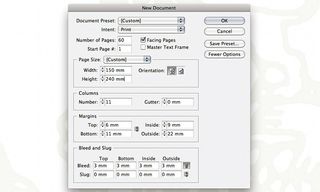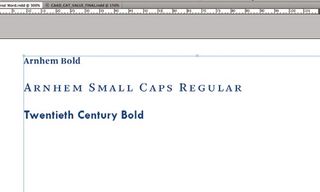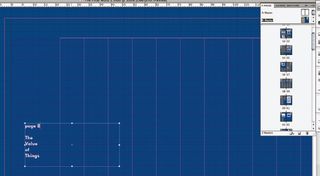10 tips for creating the perfect logo
Get your branding right every time with our guide to creating brilliant identities
1 Keep it simple
There are dozens of scientific and design-based studies that make this point rock solid: the simpler your logo, the easier it is to recall. This, after all, is the sole purpose of your branding for a company. So hone in on the brand’s core values, pair this down to two or three key phrases, then use these phrases as starting places for relevant shapes, colours or actions.

2 Don’t be too literal
Subtlety is key in effective logo design. The fundamental point is to ignite recognition in your viewer as quickly as possible, and that relies on simplicity. If you can also introduce a secondary level of familiarity or surprise through subtlety, then do so, but avoid a literal translation of any motif – this won’t be doubling up on information, it’ll be cluttering information.
3 Select size carefully
It’s not how big your logo is, it’s how big its elements are in relation to each other. If your logo design is poorly proportioned, then when it’s shrunk down for smaller usage, important parts of it will be harder to recognise. Similarly, when blown up, other elements may dominate. Keep your logo designs to a logical ratio.
4 Make it versatile
A logo no longer exists solely on a shop sign or letterhead. Logos exist in multiple formats in numerous environments, from mobile devices to billboard ads. Your logo needs to work across dozens of mediums in varying sizes, and in both RGB and CMYK environments, for digital and print uses, so pick colours that take this into account – no spot fluorescents.

5 Always consider your audience
First ask yourself or your client who the audience is. Many colours have different subconscious and even cultural meanings outside of the Western world, so research is key. You should also gauge suitability. Kids’ branding isn’t reserved – with tight serif fonts and neat ordering – for a good reason. Similarly, a firm of lawyers or a restaurant will have their own needs. Figure these out before you start.
6 Stick with a limited colour range
Keep your colour palette sparse, and use a maximum of three to four colours in unison. That means making sure you’re using each colour for a reason. If you bring in a new colour simply to fill a small hole in the design, it introduces a further piece of information your audience must process in order to recognise it.

7 Think beyond just the logo in your plans
Think of a famous piece of branding. Now think of how and where it is deployed. For example, the Mastercard identity sits on credit cards as its primary location. But elements of its branding work elsewhere, thanks to its memorable colourways. So a website or printed flyer can inexplicitly show brand recognition in a similar way, by using the brand’s key colours. Think of how your logo can lend itself to further branded elements in this way.
Get the Creative Bloq Newsletter
Daily design news, reviews, how-tos and more, as picked by the editors.
8 Forget trends
Trends are important, but they shouldn’t define your logo. If you create a logo for a client project that taps into current trends, it will date more quickly than a design that suits the client first and foremost. For example, you might persuade a law firm to go with bold colours and an edgy typeface, but this will be unsuitable for its audience, break the natural style of this type of logo and be harder for their clients to recall later – there’s a reason why all fast food restaurant branding looks the same.

9 Remember the golden rule
The golden rule of branding is that a logo must be describable. That is, like Nike’s ‘swoosh’ or McDonald’s ‘golden arches’, there’s a simplicity and uniqueness that can be conveyed by description. Clear colourways and easily explainable shapes mean your logo will be more memorable, which, after all, is its purpose.
10 Forge your own logo technique
Experiment in your logo design work in a way that feels comfortable. Some logo designers fix on colour before embarking on the shape and type; others reverse this process. There are no hard and fast rules to how you work – only what you produce – so see what feels best for each project. Once a starting block is in place, the rest of the logo should flow more naturally.
All illustrations by Josh Neal

Thank you for reading 5 articles this month* Join now for unlimited access
Enjoy your first month for just £1 / $1 / €1
*Read 5 free articles per month without a subscription

Join now for unlimited access
Try first month for just £1 / $1 / €1
The Creative Bloq team is made up of a group of design fans, and has changed and evolved since Creative Bloq began back in 2012. The current website team consists of eight full-time members of staff: Editor Georgia Coggan, Deputy Editor Rosie Hilder, Ecommerce Editor Beren Neale, Senior News Editor Daniel Piper, Editor, Digital Art and 3D Ian Dean, Tech Reviews Editor Erlingur Einarsson and Ecommerce Writer Beth Nicholls and Staff Writer Natalie Fear, as well as a roster of freelancers from around the world. The 3D World and ImagineFX magazine teams also pitch in, ensuring that content from 3D World and ImagineFX is represented on Creative Bloq.
